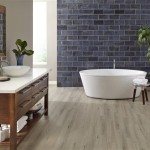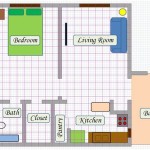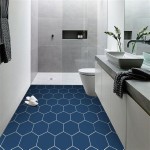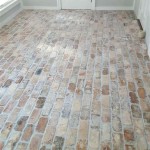Do You Need A Rug Pad For Hardwood Floors?
The question of whether to use a rug pad under an area rug placed on hardwood floors is a common one for homeowners and renters alike. While an area rug undoubtedly enhances the aesthetic appeal and comfort of a space, the long-term impact of direct contact between the rug and the floor can be detrimental. A rug pad, seemingly a small addition, offers a multitude of benefits that extend beyond simple cushioning. This article will examine the reasons why a rug pad is generally considered a necessity for hardwood floors. It will explore the protective, safety, and comfort advantages of utilizing rug pads, weighing the potential drawbacks of foregoing their use.
Protection Against Damage to Hardwood Floors
Arguably the most significant benefit of using a rug pad is the protection it provides to hardwood floors. Hardwood, despite its durability, is susceptible to a range of damages caused by rugs placed directly on its surface. One primary concern is abrasion. The backing of many rugs, especially those made of rough materials, can act like sandpaper when rubbed against the floor. This abrasion is exacerbated by foot traffic and general movement, resulting in scratches, scuffs, and a gradual dulling of the hardwood's finish.
Certain types of rugs, particularly those with jute or coarse natural fiber backings, are notorious for their abrasive qualities. These materials are inherently rough and can easily scratch the delicate surface of hardwood. Even rugs with seemingly smooth backings can trap dirt and debris over time. These trapped particles act as an abrasive agent, constantly grinding against the floor with each step.
Beyond abrasion, rug pads also offer protection against staining and discoloration. Certain rug dyes, especially in the case of older or low-quality rugs, can bleed and transfer onto the hardwood surface, particularly if the rug becomes wet. Hardwood, being porous, readily absorbs these dyes, leading to permanent staining. A rug pad acts as a barrier, preventing the dye from seeping into the floorboards.
Another form of discoloration can occur due to uneven exposure to light. When a rug is placed directly on hardwood, the area underneath the rug is shielded from sunlight. Over time, the exposed portions of the floor will naturally lighten or change color due to UV exposure. This results in a noticeable difference in color when the rug is eventually removed, leaving a "ghosting" effect where the rug once was. A rug pad, while not completely eliminating this effect, can help to minimize it by allowing for some air circulation and reducing the direct pressure that contributes to uneven fading.
Furthermore, rug pads distribute weight evenly across the floor’s surface. Concentrated weight, especially from heavy furniture placed on the rug, can create indentations in the hardwood over time. A rug pad helps to disperse this weight, preventing localized pressure and minimizing the risk of permanent marks.
Enhancement of Safety and Comfort
The presence of a rug pad significantly enhances safety within the home, primarily by preventing slips and falls. Area rugs placed directly on hardwood floors are prone to sliding, especially on smooth, polished surfaces. This poses a significant tripping hazard, particularly for children, the elderly, and individuals with mobility issues. A rug pad provides a crucial layer of grip between the rug and the floor, effectively anchoring the rug in place and minimizing the risk of it shifting or bunching up.
The improved stability afforded by a rug pad is particularly important in high-traffic areas such as hallways, entryways, and living rooms. In these spaces, rugs are frequently subjected to quick movements and sudden stops, increasing the likelihood of slippage. By preventing the rug from sliding, the rug pad creates a safer environment for everyone in the household.
Beyond safety, a rug pad also enhances the comfort of walking and standing on an area rug. The pad provides an extra layer of cushioning underfoot, making the rug feel softer and more comfortable. This is especially beneficial for individuals who spend a lot of time on their feet, as the added cushioning can help to reduce fatigue and strain on joints. The increased comfort is particularly noticeable with thinner rugs that offer minimal cushioning on their own.
The cushioning also contributes to improved sound absorption. Rug pads help to dampen noise by absorbing vibrations and reducing the echo effect in a room. This can be particularly beneficial in apartments or homes with hardwood floors throughout, as it helps to create a quieter and more peaceful living environment. The sound-dampening effect is further enhanced by thicker rug pads made of dense materials.
Finally, a rug pad can extend the lifespan of both the rug and the hardwood floor. By preventing the rug from sliding and bunching up, the pad reduces wear and tear on the rug's fibers. This, in turn, helps to maintain the rug's appearance and prolong its lifespan. Similarly, by protecting the hardwood floor from scratches, stains, and other damage, the rug pad helps to preserve the floor's value and appearance over time. The investment in a rug pad can, therefore, be seen as a cost-effective way to protect both the rug and the floor.
Considerations When Selecting a Rug Pad
Choosing the right rug pad is crucial to maximizing its benefits. Several factors should be considered when selecting a rug pad for hardwood floors, including the type of material, the thickness, and the size. Different materials offer varying levels of grip, cushioning, and protection, while the thickness will determine the level of comfort and sound absorption. The size of the pad should also be appropriate for the size of the rug to ensure adequate coverage.
Common rug pad materials include felt, rubber, felt-rubber combinations, and memory foam. Felt pads are typically made of recycled fibers and offer good cushioning and sound absorption. They are a good choice for adding comfort under thinner rugs. Rubber pads provide excellent grip and are ideal for preventing rugs from sliding on smooth surfaces. However, some rubber pads can leave residue on hardwood floors over time, so it is important to choose a high-quality rubber pad that is specifically designed for use on hardwood.
Felt-rubber combination pads offer a balance of cushioning and grip. They consist of a felt layer for comfort and a rubber layer for preventing slippage. These pads are a popular choice for their versatility and effectiveness. Memory foam pads provide the highest level of cushioning and are ideal for creating a luxurious feel underfoot. However, they may not offer as much grip as rubber or felt-rubber pads.
The thickness of the rug pad will depend on personal preference and the desired level of comfort. Thicker pads provide more cushioning and sound absorption, but they can also raise the height of the rug, which may be a concern in areas with low door clearances. Thinner pads, on the other hand, offer less cushioning but are less likely to interfere with door openings. A thickness of ¼ to ½ inch is generally considered a good compromise for most situations.
The size of the rug pad should be slightly smaller than the size of the rug. This prevents the pad from being visible around the edges of the rug and reduces the risk of tripping. A general rule is to subtract 1-2 inches from the rug's dimensions to determine the appropriate pad size. For example, if the rug is 5x8 feet, the rug pad should be approximately 4'10" x 7'10". If a standard size is unavailable, the pad can be trimmed to fit using a utility knife or scissors.
Finally, it is essential to choose a rug pad that is specifically designed for use on hardwood floors. These pads are typically made of materials that will not damage or stain the floor's finish. Avoid using pads made of PVC or other materials that can react with the hardwood and cause discoloration. Look for pads that are labeled as being "safe for hardwood floors" or that are recommended by flooring manufacturers.
In conclusion, while rug pads represent an additional expense, their protective, safety, and comfort benefits are significant. They prevent damage to hardwood floors, reduce the risk of slips and falls, and enhance the overall comfort of the living space. Choosing the right rug pad requires careful consideration of factors such as material, thickness, and size, but the investment is well worth it in terms of protecting the longevity and beauty of both the area rug and the hardwood floor beneath.

Is A Rug Pad Necessary 5 Reason Why Nw Rugs Furniture

What Type Of Non Slip Rug Pad Is Best For Hardwood Floors Rugpad

How To Choose A Rug Pad For Hardwood Floor Yorkshire Bedding

Do I Need A Rug Pad Or Can Skip It Making Maanita

9 Best Rug Pads That Hardwood Floors Will Love Enthralling Gumption

Do You Need To Use A Rug Pad Rugpadusa

The Best Rug Pads Reviews By Wirecutter

Are Rubber Backed Rugs Right For Your Floors Rugpadusa

Best Rug Pads For Hardwood Floors Buyer S Guide

Non Slip Rug Pad Options For Hardwood Flooring And More







